Almost a new plane.
Many large modifications are made, only the main fuselage and wings are kept.
- Nose cone are remade to make it more realistic
- New cockpit design (no instruments, this game is SIMPLE PLANES not DCS the only use for "instruments" are make the design more unwelcome to mobile users)
- Weapons are reshaped and relocated)
- Added 3 fuel tanks
- Added formation lights
- New front landing gear
- Added engine details
- Added countermeasures (I tried to add decoys, but due to the SP physics it more likely for suicide than save pilot's life)
No A/A A/G cannon because this is the RAF version and they cant afford the BK-27(in fact, they think cannons don't worth the price compared to their use in combats)
How to operate:
- AG 1 to lit up engine
- AG 2 to turn on formation lights
- AG 5 for AG weapon jettison
- AG 6 fuel tank jettison
- AG 7 for speed-chute
- AG 8 to turn on/off lights
WHAT is EF Typhoon (from wiki)
The Eurofighter Typhoon is a twin-engine, canard–delta wing, multirole fighter. The Typhoon was designed originally as an air superiority fighter and is manufactured by a consortium of Airbus, BAE Systems and Leonardo that conducts the majority of the project through a joint holding company, Eurofighter Jagdflugzeug GmbH formed in 1986. NATO Eurofighter and Tornado Management Agency manages the project and is the prime customer.
The aircraft's development effectively began in 1983 with the Future European Fighter Aircraft programme, a multinational collaboration among the UK, Germany, France, Italy and Spain. Disagreements over design authority and operational requirements led France to leave the consortium to develop the Dassault Rafale independently. A technology demonstration aircraft, the British Aerospace EAP, first took flight on 6 August 1986; the first prototype of the finalised Eurofighter made its first flight on 27 March 1994. The aircraft's name, Typhoon, was adopted in September 1998; the first production contracts were also signed that year.
Political issues in the partner nations significantly protracted the Typhoon's development; the sudden end of the Cold War reduced European demand for fighter aircraft, and debate existed over the aircraft's cost and work share. The Typhoon entered operational service in 2003; it has entered service with the air forces of Austria, Italy, Germany, the United Kingdom, Spain and Saudi Arabia. The air forces of Oman, Kuwait and Qatar are export customers, bringing the procurement total to 623 aircraft as of 2019.
The Eurofighter Typhoon is a highly agile aircraft, designed to be a supremely effective dogfighter in combat. Later production aircraft have been increasingly better equipped to undertake air-to-surface strike missions and to be compatible with an increasing number of different armaments and equipment, including Storm Shadow and the RAF's Brimstone. The Typhoon had its combat debut during the 2011 military intervention in Libya with the UK's Royal Air Force and the Italian Air Force, performing aerial reconnaissance and ground-strike missions. The type has also taken primary responsibility for air-defence duties for the majority of customer nations.
Specifications
Spotlights
- Trainzo 6.4 years ago
- EngieWeeb 6.4 years ago
- Hawkeye156 6.4 years ago
- Renameduser4 6.4 years ago
- AWESOMENESS360 6.4 years ago
- Shimamurahougetsu 6.0 years ago
General Characteristics
- Successors 4 airplane(s) +21 bonus
- Created On Mac
- Wingspan 34.8ft (10.6m)
- Length 50.0ft (15.2m)
- Height 17.5ft (5.3m)
- Empty Weight 529lbs (239kg)
- Loaded Weight 16,701lbs (7,575kg)
Performance
- Power/Weight Ratio 6.458
- Wing Loading 14.0lbs/ft2 (68.3kg/m2)
- Wing Area 1,193.7ft2 (110.9m2)
- Drag Points 8395
Parts
- Number of Parts 249
- Control Surfaces 7
- Performance Cost 1,145

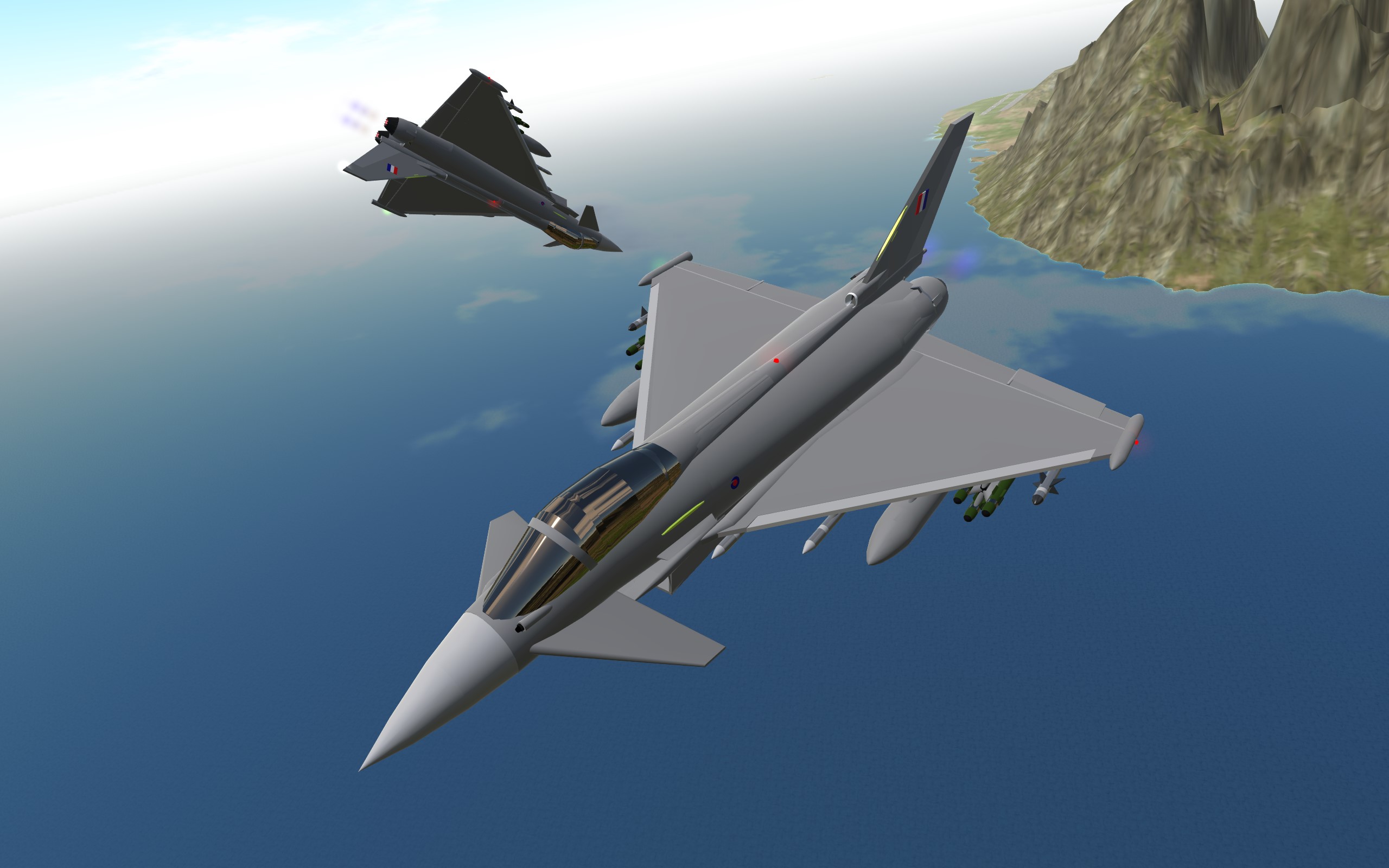
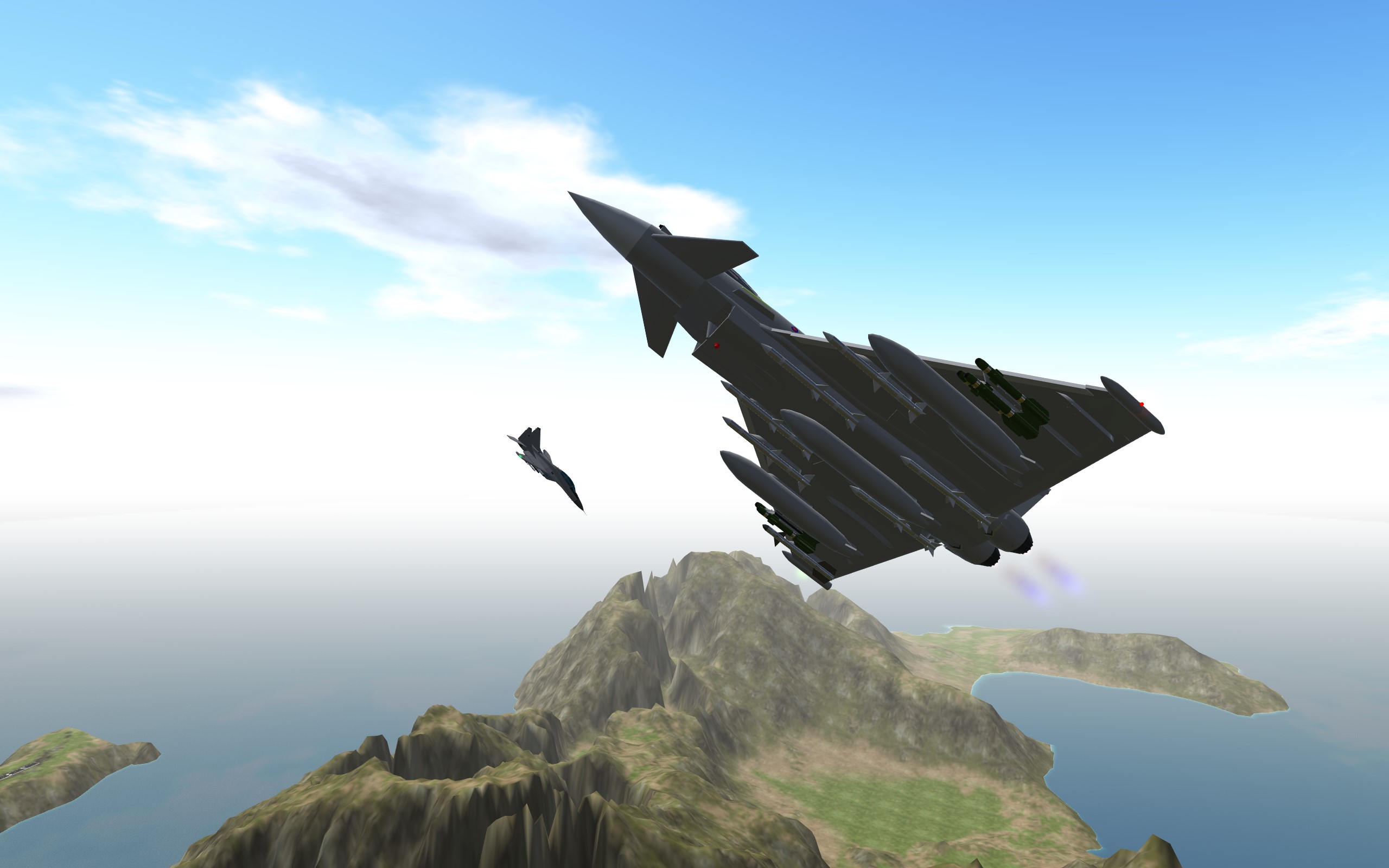
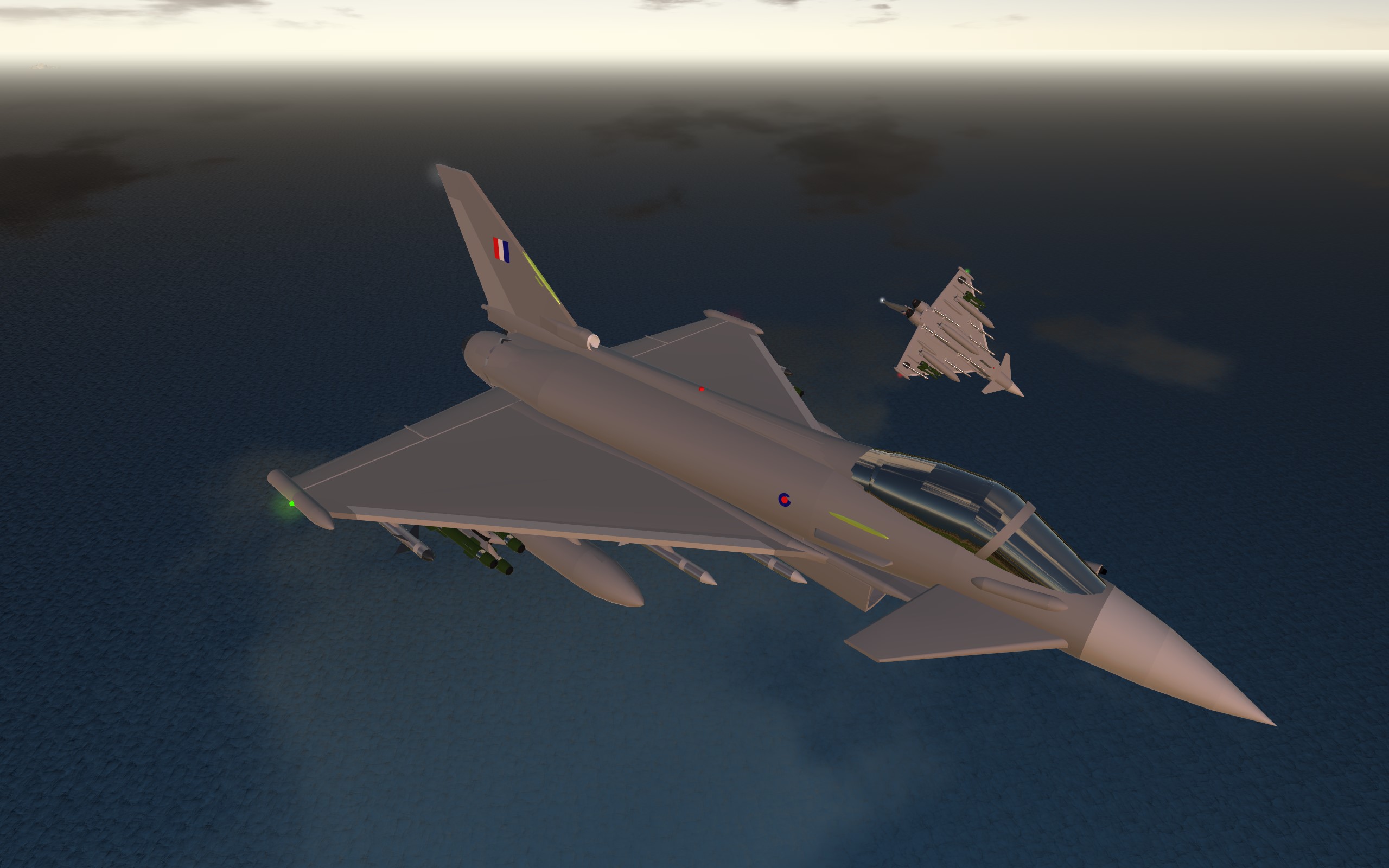
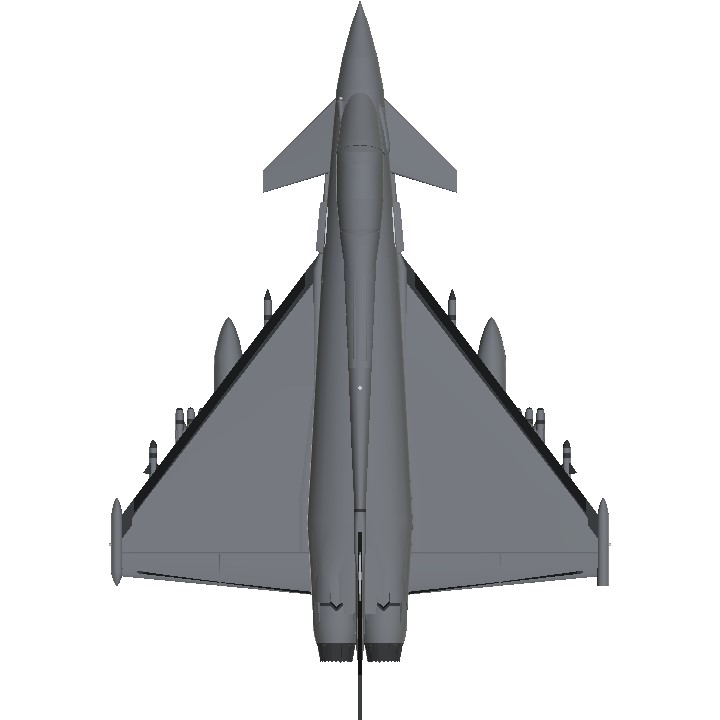
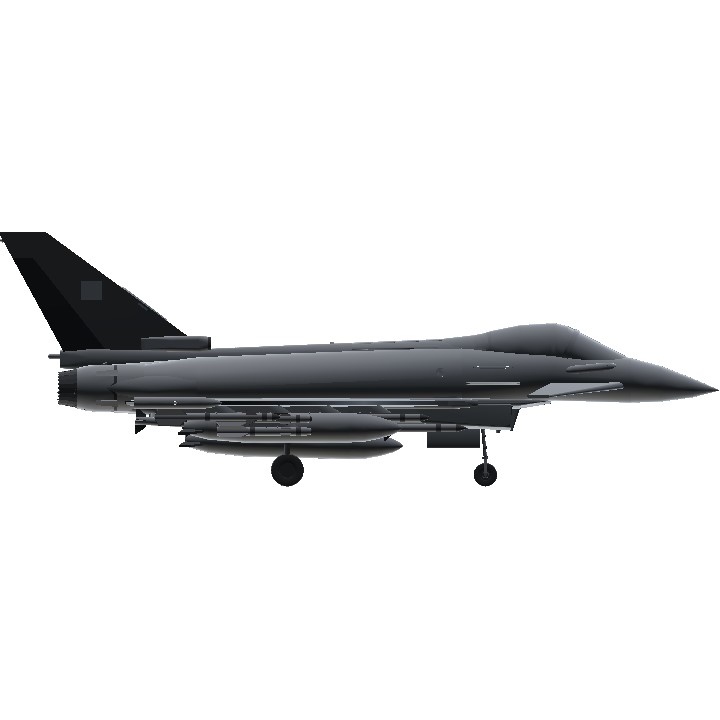
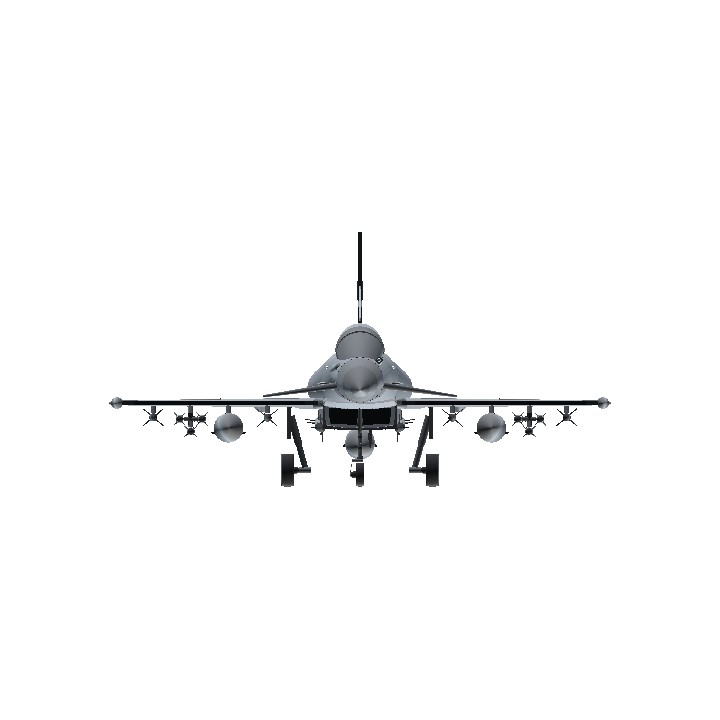
Hey @Lynette, can we collab?
Ah @TheFantasticTyphoon
Very nice plane . I love it . Great job .
@Strikefighter04
@Aeromen
See below.
@Potkuri
@Lynette
@Frenchyfry
Unfortunately you are wrong. That decision was reversed in 2006. Here is my proof.
you are right,the concrete is only for keeping the same weight of real cannons because they have to keep the center of gravity unchanged in order to use current FBW program. @Frenchyfry
@Potkuri I dont think they do because the concrete is designed to have the same weight as the cannon, anyways I did some research and apparently in 2006 they changed their minds and gave them cannons
Haha, Thanks for the info. I bet they still save a fortune in lower maintenance costs, saved fuel (because of a lighter plane), and obviously in bullets and training associated with the cannon.@Lynette
@Aeromen probably the UK being tight tbh
@Frenchyfry @Frenchyfry @Potkuri RAF use concrete dummy cannons to replace the real ones because they also don't want to spend money on rewriting FBW programs.This makes those concrete dummy cannons probably the most expensive dummy weapons in human history.
Who am I to argue with the Brits or their need for a cannon in real life. Still I was missing one in this version. Still, great job!
I always assumed there was a cannon now im just disappointed in the RAF
Looks great for the number of parts
This is cool! Also, its dumb that the Brits don't think the cannon is necessary, look at the F-4 example.